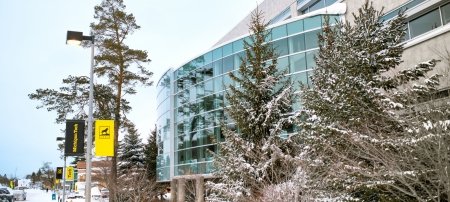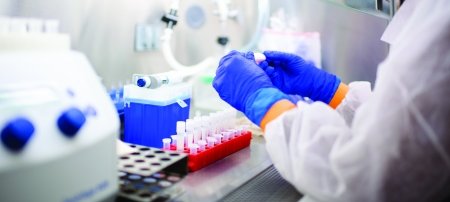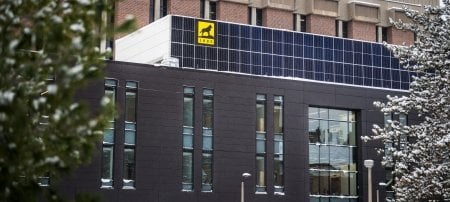Underwater robots, 2,036 snowmen, an alumni/multiple Guinness Record breaker, crazy smart research happening on the country's safest campus–Huskies mend hearts, explore Big Data, and support STEM educators.
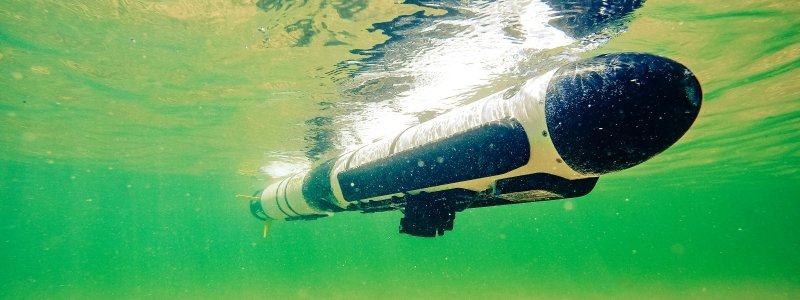
The Anatomy of an Underwater Robot
Great Lakes Research Center's autonomous underwater vehicle (AUV)—the IVER-3—is the first of the third generation sold to anyone outside the military. The torpedo-shaped robot imaged two previously unknown shipwrecks last year. The Michigan State Police Underwater Recovery Unit has an identical robot, purchased after spending a week on campus training with our experts.
Learn more about the crazy smart IVER-3:
-
6"width
-
72 lbsweight
-
6' 1"height
-
3 MPHmaximum speed
-
330'navigation depths
-
001serial number (truly the first of its kind)
Runs a mission every week or two during soft water season.
Maximum autonomous operating time: up to eight hours (completes mission and returns to a predetermined parking point on the surface).
Arrived on campus September 6, 2013. GLRC staff traveled to Massachusetts for pickup and operation training.
Images objects using sound waves at two different frequencies to create sonograms.
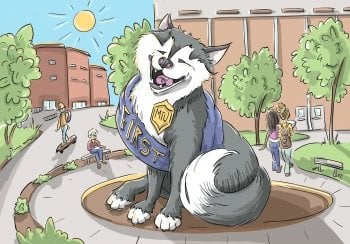
Michigan Tech Named Safest Campus in the Country
This past winter, College Magazine ranked our campus the safest in the nation. While we're proud of the distinction—the magazine noted our crime rate is 53 percent lower than the national average—we know it's attributed to the values Huskies share: community, scholarship, possibilities, accountability, and tenacity.
Alumnus Bob Evans Breaks Guinness Record
There are running records to be broken. There are juggling feats to tackle. One crazy smart alumnus combined running and juggling by performing them simultaneously and backwards. And broke a Guinness record for fastest mile joggling backwards with three objects.
Time: 6 minutes 45.85 seconds
"I've broken a few existing records, but never went through the process of getting them verified," says Bob Evans '07.
Bob's inspiration came from a close friend, Bill Bails. Bill works as a race director and hosts an annual 5K with prizes for the fastest juggling runners. He has been a source of support for Bob and wife Trish '08 over the years. "Bill's a great man who has been battling a terrible form of cancer for the past couple years. I wanted to do something to honor him," says Bob.
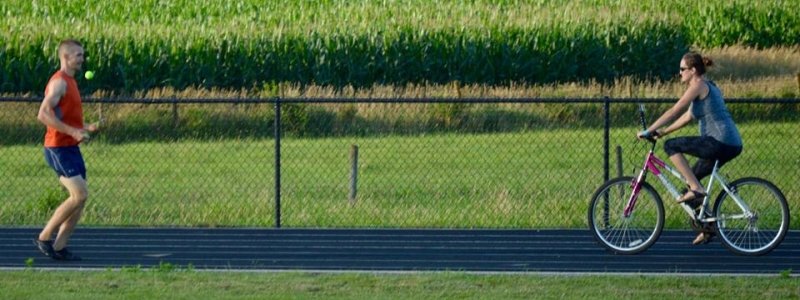
Team effort! Alumni Bob Evans '07, joggling, and Trish Evans '08, pacing on bike, during last summer's successful Guinness World Record feat.
Bob broke the record in Bill's hometown of Stanwood, Iowa, as part of a community track meet and a ceremony officially naming the stadium Bill Bails Track.
"It was a surreal night. Six-months-pregnant Trish rode a bike with a GoPro attached alongside me the whole mile. My niece was there. Just about the entire town came out to cheer. It was really a special night . . . intense yet peaceful."
Bob is currently training for the fastest mile while dribble-juggling three basketballs (mind = blown). "I like the idea of breaking a world record every year around my birthday, July 24."
Follow the adventures of Bob and Trish and meet baby Jasper Grit (future Husky?!) on Facebook.
What is STEM Education?
Especially at a technological university, the term "STEM" is used a lot. In a pre-college setting, STEM education focuses on how to implement the best practices for teaching science, technology, engineering, and math. Assistant Professor of STEM Education in Cognitive and Learning Sciences Emily Dare and her team found there is less consistency in these practices than the K–12 educational community may assume. In fact, K–12 teachers use a variety of models to teach STEM—a more complex system than initially apparent.
Get a look at what's happening inside our Ion Space Propulsion Laboratory.
Mending Broken Hearts with Cardiomyocyte Molds
Whether caused by an undetected birth defect or a heart attack, when a heart sustains damage, it can be difficult to repair. Fixing broken hearts with new heart muscle cells requires growing cells in an environment like that found in the heart. Assistant Professor Parisa Pour Shahid Saeed Abadi designs three-dimensional substrates that promote better maturation and functionality of heart muscle cells created from induced pluripotent stem cells.
Big Opportunities in (Big) Data Science
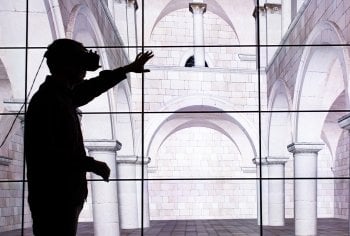
In 2000, the amount of data stored globally hovered around 800,000 petabytes. These days, Twitter and Facebook both generate more than seven terabytes of data each day—and projections for 2020 place the data lode at approximately 35 zettabytes. The US Bureau of Labor Statistics forecasts a 19 percent growth in employment for computer and information research scientists by 2020. With its MS in data science, Michigan Tech answers the call.
"The data sciences program at Michigan Tech truly reflects the multidisciplinary aspects of the field. Students are not only educated in the curriculum—data mining, statistics, coding, and business—but they also extend their focus to domain areas including machine learning, health sciences, mathematics, management systems, and more," says Tim Havens '99 '00, William and Gloria Jackson Associate Professor of Computer Systems and graduate program director.
Mi-STAR: Michigan Science Teaching and Assessment Reform
Led by Michigan Tech and made possible by a donation from the Herbert H. and Grace A. Dow Foundation, Mi-STAR is a partnership of universities, school districts, and professional societies working together to develop curriculum, assessments, and professional learning programs supporting teachers.
"The Dow Foundation is committed to improving STEM education—and their commitment is paying off across the state, particularly in their home area of Midland. Midland teachers participate in every aspect of Mi-STAR, and there is strong support for Mi-STAR from the district's administration," says Jacqueline Huntoon, Michigan Tech provost and vice president for academic affairs and Mi-STAR project lead and principal investigator.
Midland leveraged its Mi-STAR work by securing funds from the state to run Mi- STAR curriculum development centers throughout Midland and Saginaw. The funds helped Midland build the capacity needed for STEM education reform in the Bay Region, and at the same time, increase the size of the Mi-STAR network.
National Science Foundation (NSF) is sponsoring a Michigan Tech program—$2.8 million in overall funding—to further grow Mi-STAR; Kalamazoo Public Schools and the Saginaw Intermediate School District are key partners on the NSF project.
"Michigan Tech's collaborations with Michigan school districts advances the success of K–12 projects like Mi-STAR," Huntoon adds.
2015
- 6 schools/districts
- 16 Mi-STAR teachers
- 1,700 students
2018
- 105 schools/districts
- 450 Mi-STAR teachers
- 45,000 students
Husky Tales: Mahsa Asgarisabet
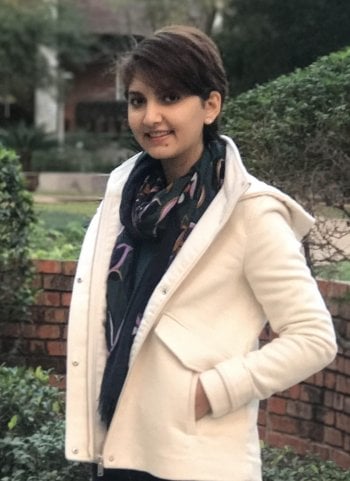
I received my second master's degree in mechanical engineering with a focus in acoustics from Michigan Tech and will soon graduate with my PhD. I was always interested in coming to the US for school. It was a hard decision to leave my family and friends back home. I did have a few friends at Michigan Tech before coming here, which helped a lot. Being in such a small town was new to me. I was born in Tabriz, Iran, and have always lived in big cities, but I have enjoyed my time here— everyone is so friendly.
Being a Husky means being hardworking— classes demand a lot. I also think it means being happy and helpful. I didn't expect everyone to be so happy in this weather. They love and embrace it.
Michigan Tech has a strong engineering program, the professors are great, and it's well-known in industry. I learned a lot and developed many contacts from industry during my time here. I've become independent despite being so far away from my family and loved ones. It has given me confidence in my research and myself.
I recently received an offer to intern with Apple. I got a message through LinkedIn from Apple's recruiters. From there, they interviewed me twice and offered me an internship within a day. They were very fast! This will be my third internship and I am excited to use the knowledge I gained here and apply it practically. My background in acoustics helped me secure this position, along with the courses I took and help I've received from Career Services along the way.
Believe in your dreams. And girls: don't be afraid to go into engineering. Don't be disappointed if you fail—I was turned down by many companies. Update your online profiles regularly and use all resources at Michigan Tech.
Michigan Technological University is an R1 public research university founded in 1885 in Houghton, and is home to nearly 7,500 students from more than 60 countries around the world. Consistently ranked among the best universities in the country for return on investment, Michigan's flagship technological university offers more than 185 undergraduate and graduate degree programs in science and technology, engineering, computing, forestry, business, health professions, humanities, mathematics, social sciences, and the arts. The rural campus is situated just miles from Lake Superior in Michigan's Upper Peninsula, offering year-round opportunities for outdoor adventure.

